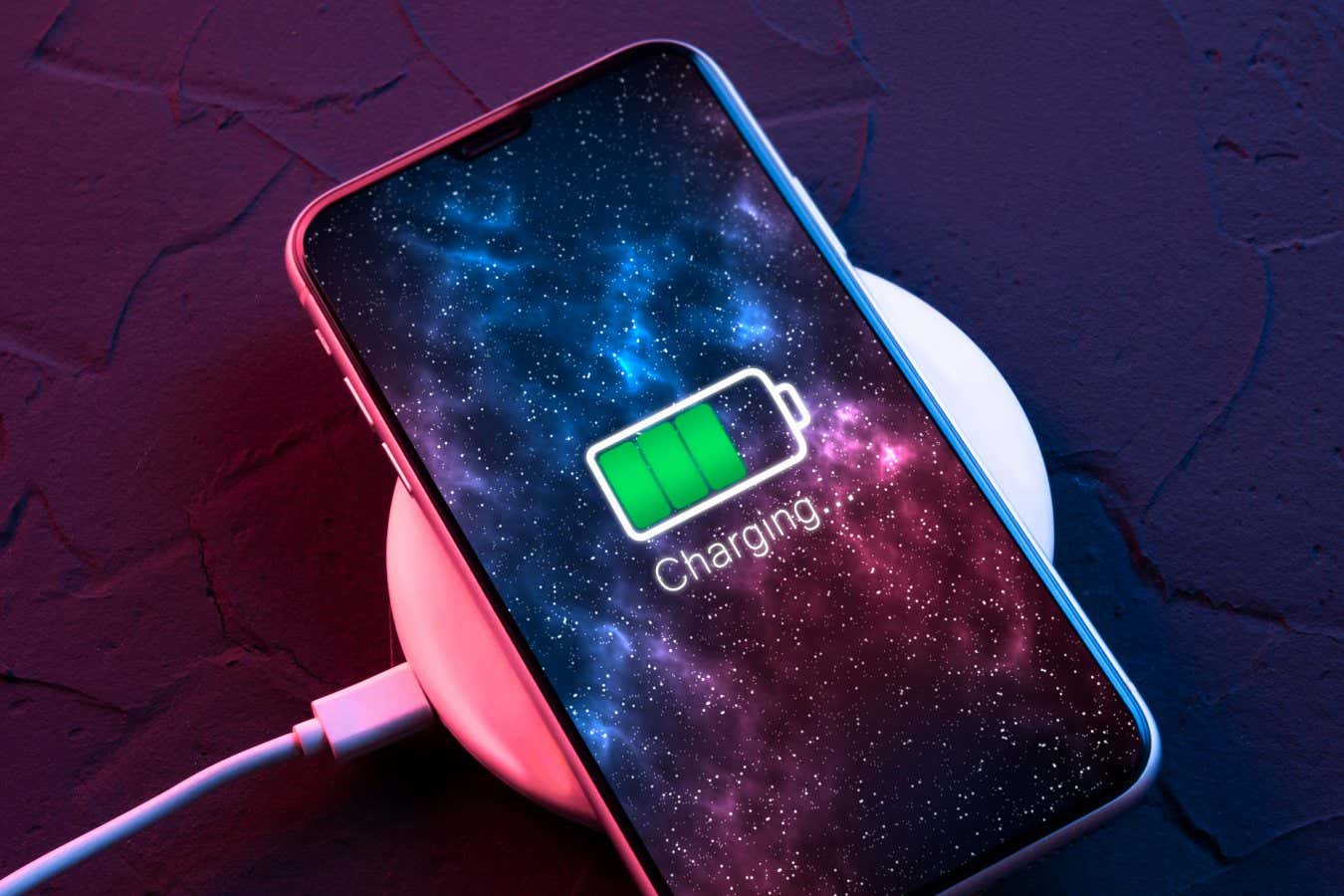
Your phone charger needs precise quantum measurements
Shutterstock/Zoomik
If you are anything like me, you are almost always charging your smartphone. What you might not realise is that the ability to do so safely depends on a delicate quantum measurement at the cutting edge of physics.
To understand why, we need to look at what happens when you plug your charger into a standard outlet. The electricity that flows from the outlet carries more than hundred volts, but the charger is designed so that by the time electricity reaches your phone, it has been converted to carry around a dozen. Were it not for this reduction in voltage, the phone would catch on fire.
In other words, the exact number of volts matters in a very concrete way. But how do we know what a single volt is? And who makes sure you can trust the manufacturer of your phone charger when they report its voltage?
Though this may seem like a purely scientific question, in the US the volt has a legal definition that dates to 1904 and is maintained by the National Institute of Standards and Technology (NIST), which is tasked with ensuring that all industries in the country agree on what different units – be they volts or kilograms or seconds – are and use them consistently. Many other countries have their own national metrology unit to do the same thing, such as the UK’s National Physical Laboratory.
When it comes to the volt, for more than three decades, NIST’s definition has been based on a quantum device. Here, metrologists start with an array of superconducting junctions – a crosswalk-like arrangement of narrow superconducting regions separated by an insulating material – and expose it to microwaves of a very specific frequency. This triggers a purely quantum effect that causes a voltage difference between the junctions. The number of volts that makes up that difference is directly related to two fundamental constants of the universe. This lets researchers leverage numbers that are, as far as we know, part of the very scaffolding of our physical reality to define what a volt is.
Notably, the two constants in this case are the charge of a single electron, which is a fundamental quantum particle, and Planck’s constant, which relates the energy of a photon – a quantum particle of light – to its frequency. In other words, the line from charging your phone to the most basic ingredients of the quantum world is surprisingly short.
But the volt isn’t alone in being rooted in the quantum realm. In fact, in 2018 metrologists from across the world unanimously voted to redefine several entries in the International System of Units (SI units) that made them more intimately tied to the details of the microscopic world.
For some units, this change was radical and dramatic. The kilogram, for instance, went from being a lump of platinum alloy that could officially only be polished with leather from an endangered European goat, to being defined in terms of a combination of Planck’s constant, the speed of light and the frequency at which electrons “tick” inside of a specific kind of atomic clock. If you have stepped on a scale at a doctor’s office recently, it turns out that quantum physics was part of how meaning is assigned to the number you saw there.
The move towards more quantum definitions of units reflects incredible scientific advances that we have made over the past few decades when it comes to understanding, controlling and probing our world at its smallest scales. For example, in January, I spoke to Alexander Aeppli at the University of Colorado Boulder, a researcher involved in building some of the world’s most precise clocks. “Frequency is the best thing humans have ever measured, we’re the absolute best at measuring frequency,” he told me. The frequencies of these clocks capture how often electrons jump between different energies within an atom, a process that is governed by the laws of quantum physics.
This remarkable level of control over quantum systems, and humans being the “absolute best” at something quantum, has benefits beyond just an incredibly precise definition of a second. Atom-based clocks, for example, could find uses in precisely calculating the shape of Earth or maybe even in next-generation early warning systems for earthquakes and volcano eruptions.
Going quantum may also help democratise access to the world’s best measurement standards. Before the 2018 redefinition of SI units, manufacturers, researchers and technologists who wanted to certify that their devices were accurate and correctly calibrated often had to send them to their local metrology institute, where specialists would carry out a certification. Now, the standards against which units are certified are facets of nature that are essentially up for grabs for anyone with a sophisticated enough laboratory. “As we used to say, the idea is to put ourselves out of business,” says Richard Davis, who is retired from the International Bureau of Weights and Measures, which oversees the SI system. “The whole system is much more flexible, and also much less Eurocentric.”
“We have all of this equipment, so people do come to us. But one of the things that we’ve been working on since that redefinition is for people to not send us their equipment anymore, and we try to teach them how to measure it themselves,” NIST’s Jason Underwood told me in August. “There’s this framework now under the new SI, where all you’re trying to do is create an instrument that can give you the traceability back to those fundamental constants of the universe.”
He and his colleague recently debuted a prototype of a quantum device that can measure three different electrical units, including the volt, simultaneously, and one of their long-term goals with building it was exactly to make something that could eventually leave the NIST building. By being a three-in-one deal, such a device, if truly portable, would make it much easier and more affordable to compare electronic devices to the relevant standards.
Historically, the way we think about units has been getting more and more quantum, but what might their future hold? When it comes to electrical units like those Underwood and his colleagues worry about, the quantum standard hasn’t yet been internationally accepted in the same way as that of the second or the kilogram, and many more experiments must be done to get there. Similar devices are being developed elsewhere in the world too, such as by the EU-based QuAHMET consortium.
The future of the second is also in flux, as researchers work to build even better, re-designed atom-based clocks and demonstrate that they could be used to redefine how we measure time. In April, I reported on an international team of researchers that embarked on an epic journey with several of these fragile, state-of-the-art clocks, one from Japan, one from the UK and one from Germany, in tow, with the mission of comparing their ticks. This work is also ongoing, so I expect to be writing more about quantum clocks in the future.
But despite metrologists questing for ever more stability in their definitions, the work of metrology is inherently unstable, as it is intimately tied to national funding policies and international diplomacy. This was true in 1875, when delegates at the very first international convention on measurement had to navigate political tensions between France and Germany in the wake of the Franco-Prussian War. And it remains true today – when I reported on NIST’s work in August, part of my discussion with the researchers was about the institution’s infrastructure, which a 2023 study found to be deteriorating. The Trump administration even proposed a 43 per cent budget cut for NIST earlier this year. Congress ultimately rejected the proposal, but the episode underscores how difficult it is to divorce the work of metrology institutes from national politics.
Topics:
Source link : https://www.newscientist.com/article/2495951-why-simple-tasks-like-charging-your-phone-rely-on-quantum-measurements/?utm_campaign=RSS%7CNSNS&utm_source=NSNS&utm_medium=RSS&utm_content=home
Author :
Publish date : 2025-09-11 14:00:00
Copyright for syndicated content belongs to the linked Source.





